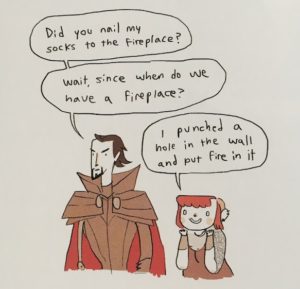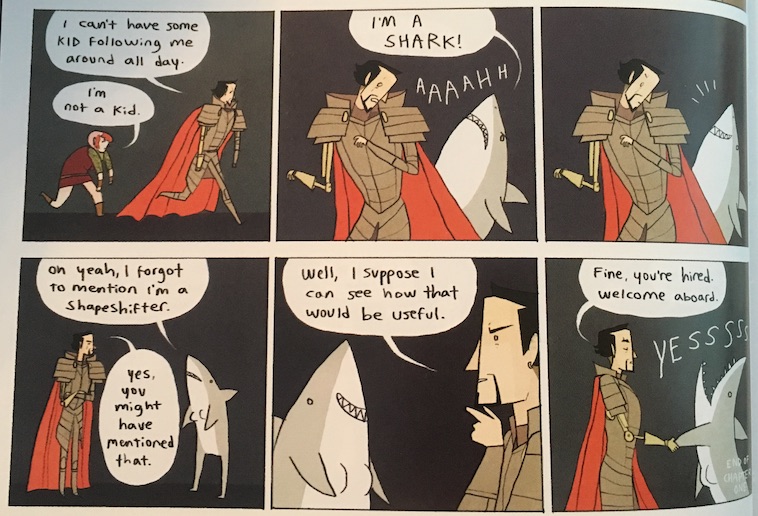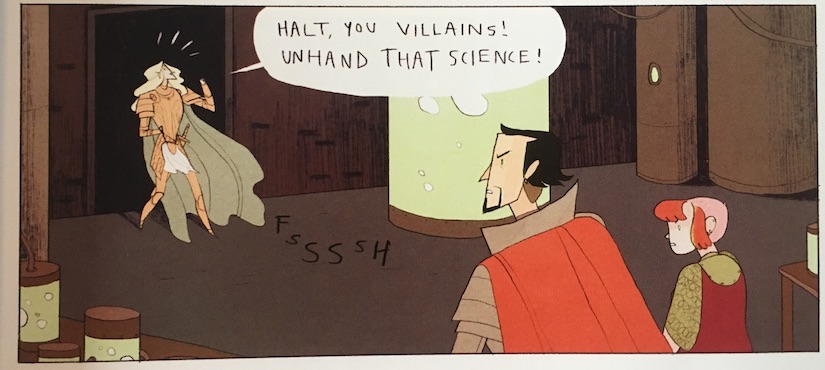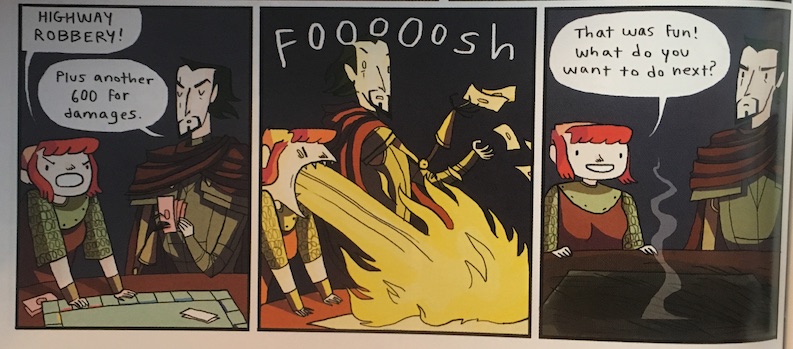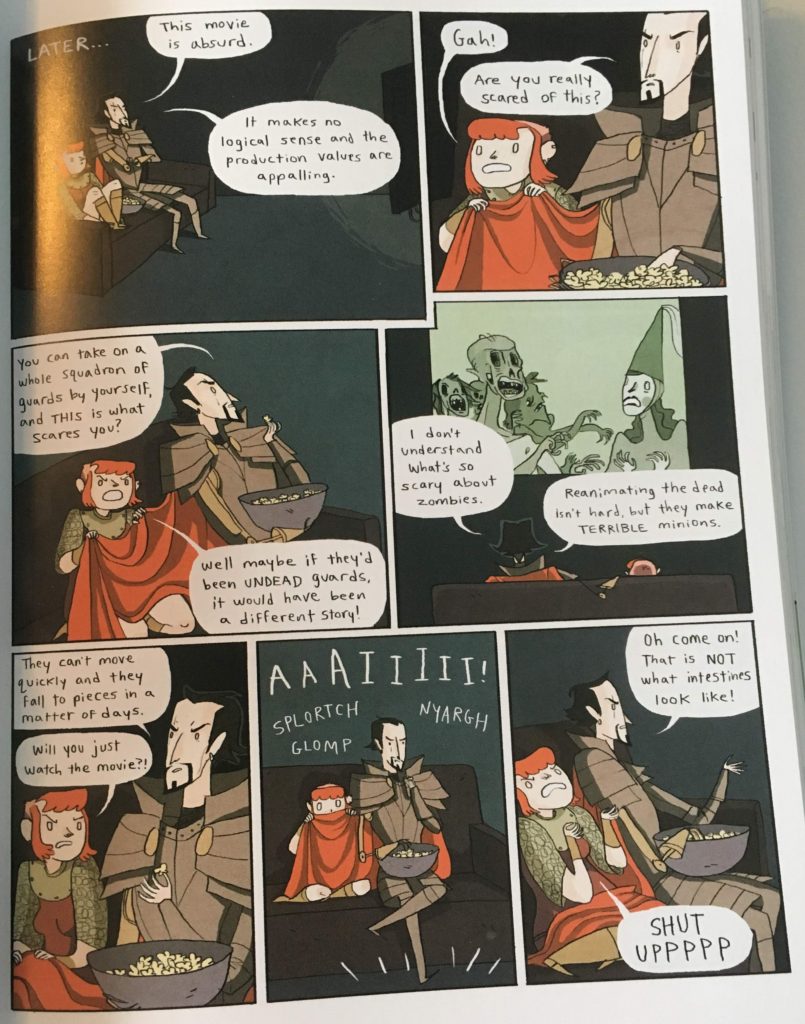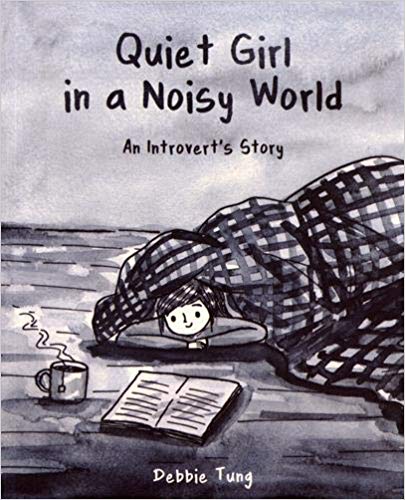 I’ve just discovered a new gem in this author/artist. There were moments I was reading this when I thought Tung must have been channeling my thoughts word-for-word. Quiet Girl in a Noisy World: An Introvert’s Story is a memoir chronicling Tung’s life from late grad school at the University of Birmingham in England through her first real job. She reflects some on her childhood and basically shows how she came to realize that being shy and very introverted is okay, not something to be ashamed of. Her art style is subdued in black, white, and gray watercolors and I really liked it.
I’ve just discovered a new gem in this author/artist. There were moments I was reading this when I thought Tung must have been channeling my thoughts word-for-word. Quiet Girl in a Noisy World: An Introvert’s Story is a memoir chronicling Tung’s life from late grad school at the University of Birmingham in England through her first real job. She reflects some on her childhood and basically shows how she came to realize that being shy and very introverted is okay, not something to be ashamed of. Her art style is subdued in black, white, and gray watercolors and I really liked it.
One of the many areas where I especially felt like she and I were on the same wavelength was with books, which she loves (as do I). She goes nowhere without one, even if she knows she won’t be able to read it, because it gives her a sense of comfort and the feeling of a friend by her side. She says:
When I see a book I’ve read and liked on someone else’s bookshelf…
I secretly know we are going to be good friends.
She talks about how emotionally attached she gets to the characters in the books she reads, and how it feels like a relationship has ended when she finishes them. She watches emotional movies so she can have an excuse to cry without judgment.
I also could really relate to the way she seeks meaning in everything and feels the need to constantly be productive in some way. She says:
I always doubt that I’m living up to my full potential.
I should learn a new language every year. Or a new skill. Maybe I can take some classes.
I feel like I should constantly be doing something to improve myself, learning new things, and growing as a person.
When will I know it’s okay to stop?
Perhaps never…
When she is starting to realize she finds her job meaningless, she asks:
I did everything right at work today.
Why do I still feel so empty?
I also expect to find meaning in the things I do, and when work isn’t fulfilling, it’s so draining.
I loved how she conveyed what it’s like to meet new people.
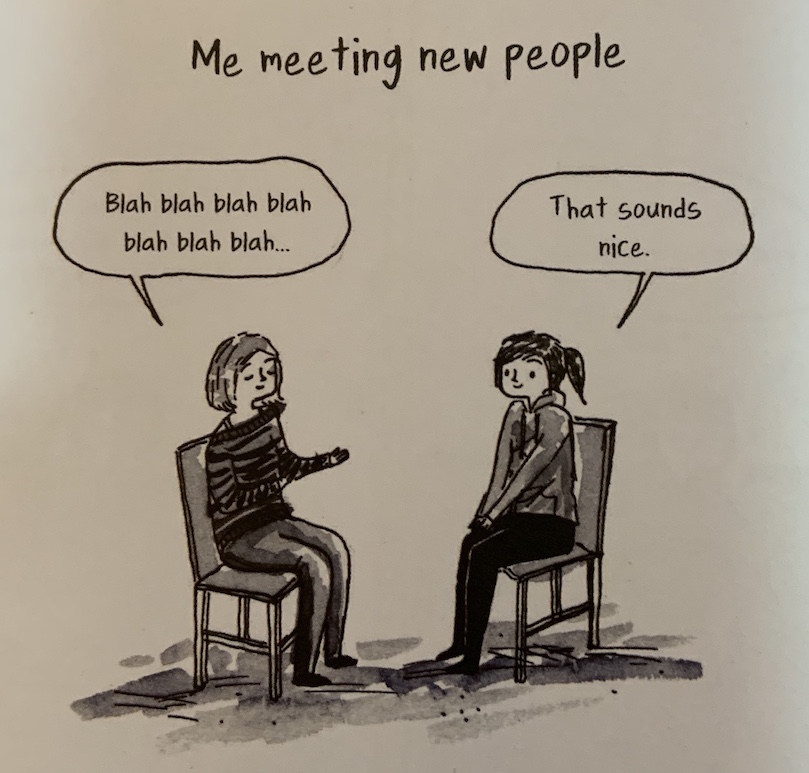
I’m so uncomfortable that this is pretty much how it is for me, too. Her general discomfort in social situations causes her a lot of stress until she finally accepts herself. She says:
I’m socially awkward and weird.
I’ve always felt like there is something wrong with me. I’ve been like this my whole life.
Sometimes her description of social interactions are so relatable. Here's the aftermath of one:
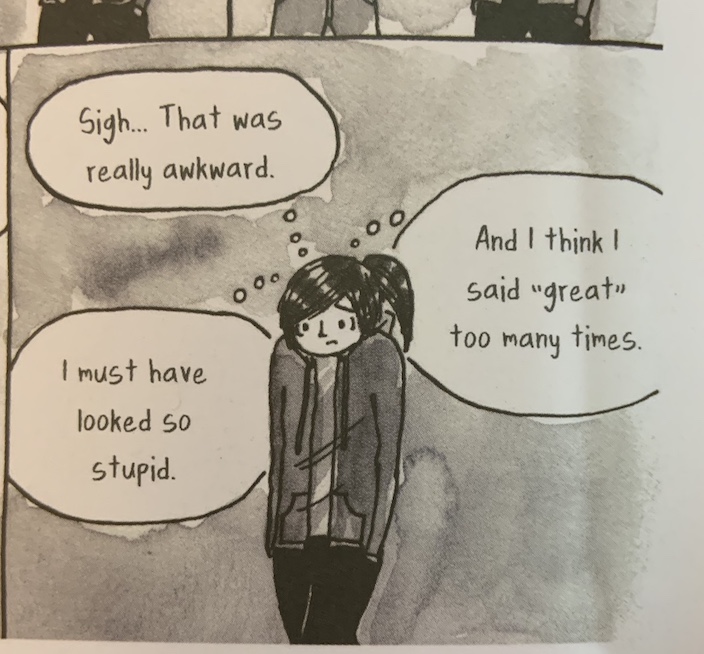
Some of it is kind of funny:
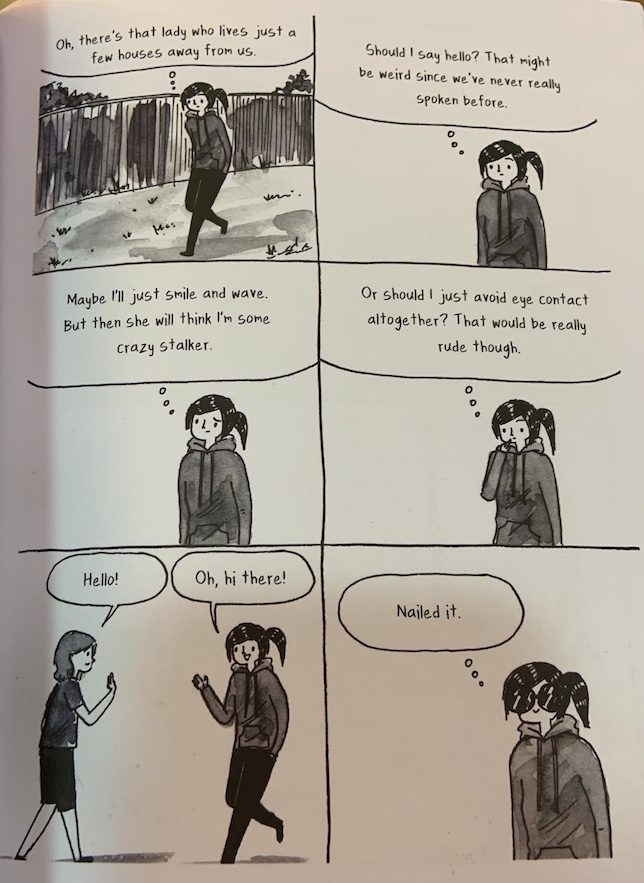
and

Another one that made me laugh was her having to make a phone call for work in front of people:
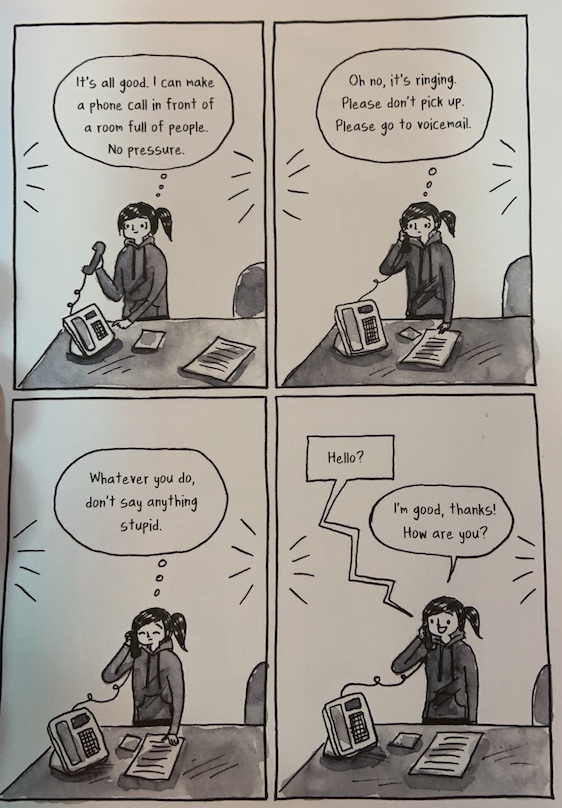
I hate calling people I don’t know well, and with people watching... Well. But in all three of these cases, it might make you laugh, but it’s kind of a sad funny.
She doesn’t feel great about herself because of the pressure society puts on introverts to be extraverted. And especially as it relates to shyness—shyness is sort of forgiven in children, but once you’re an adult you’re supposed to have outgrown it and “come out of your shell.” Although she tries to be friendly, how she really feels is:
A mixture of frustration, insanity, and dying on the inside.
She famously overthinks everything, something I can totally relate to. She’s even got a sort of flowchart that shows the thought process she goes through when deciding to go to a social event or not:
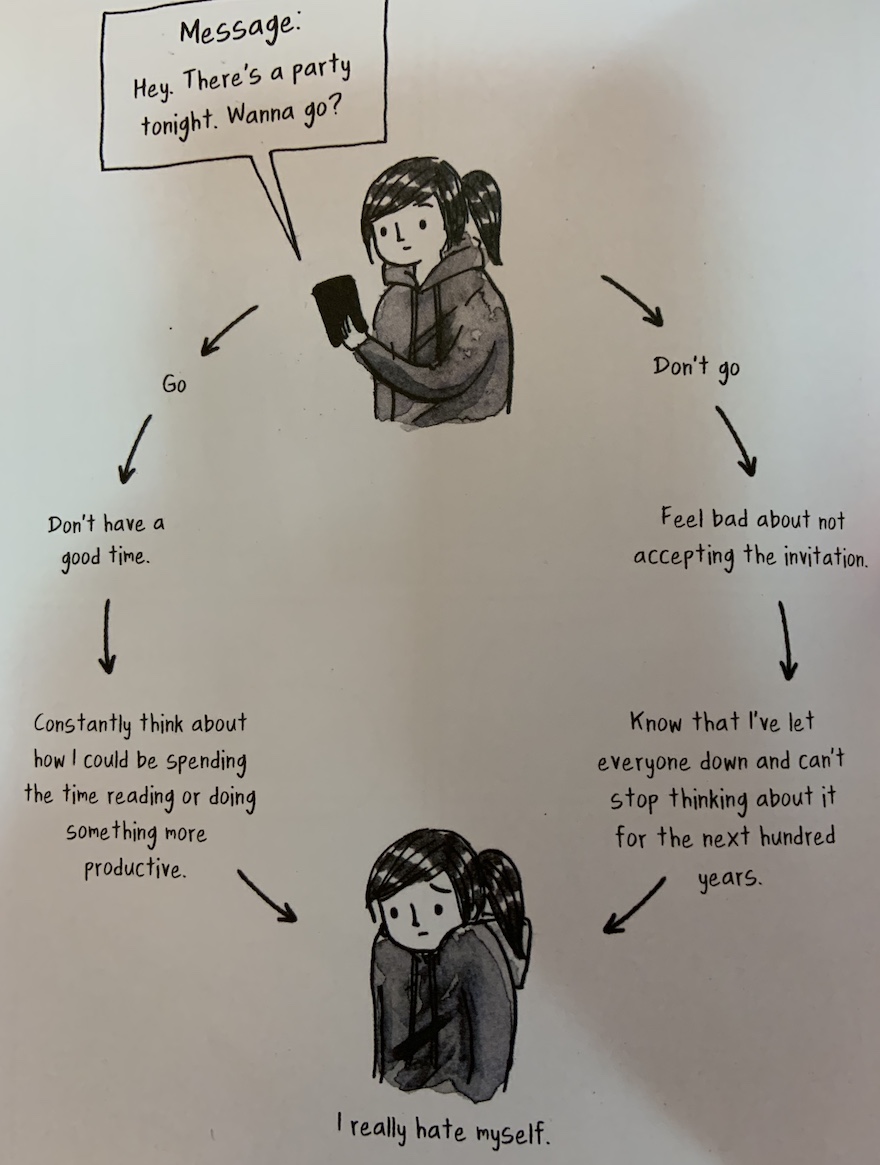
I loved how she talks about ”energy level” and how it reflects her ability to deal with social situations and her general emotional state. It’s true for me too that when I’m low on that type of energy, everything is hard to deal with:
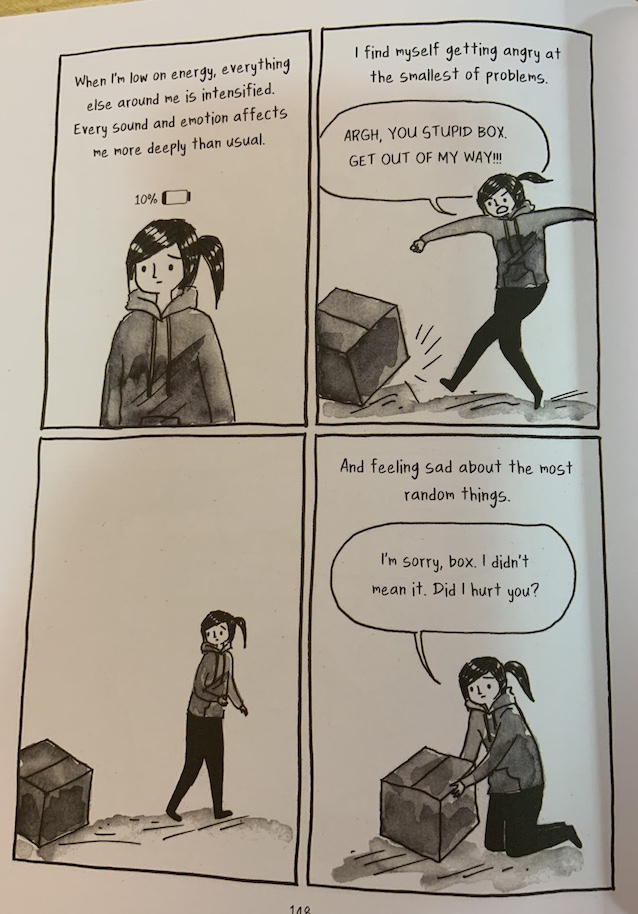 The good news is that by the end of the book, she has discovered and accepted her introversion, and no longer beats herself up over it.
The good news is that by the end of the book, she has discovered and accepted her introversion, and no longer beats herself up over it.
Overall, this is an excellent portrayal of the shy introvert’s experience (though not all introverts are shy). It’s very sweet and a little funny at times, but always honest and real to Tung’s experiences. Many people will find this highly relatable, and I think it could even be helpful for some people who can’t relate to it (i.e., extraverts) to learn about the way the other half lives. I’m looking forward to reading her other book, Book Love (how can I not like that, right?).
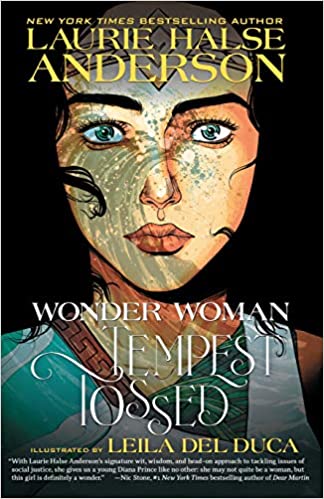 I was a little surprised to see a graphic novel by Laurie Halse Anderson, but of course I had to check it out. I'm not a superhero fan in general, but I sometimes make an exception for Wonder Woman. I'm glad I did this time. It was illustrated by an artist I wasn't familiar with, Leila del Duca, but she impressed me with her sharp style.
I was a little surprised to see a graphic novel by Laurie Halse Anderson, but of course I had to check it out. I'm not a superhero fan in general, but I sometimes make an exception for Wonder Woman. I'm glad I did this time. It was illustrated by an artist I wasn't familiar with, Leila del Duca, but she impressed me with her sharp style. I’ve just discovered a new gem in this author/artist. There were moments I was reading this when I thought Tung must have been channeling my thoughts word-for-word. Quiet Girl in a Noisy World: An Introvert’s Story is a memoir chronicling Tung’s life from late grad school at the University of Birmingham in England through her first real job. She reflects some on her childhood and basically shows how she came to realize that being shy and very introverted is okay, not something to be ashamed of. Her art style is subdued in black, white, and gray watercolors and I really liked it.
I’ve just discovered a new gem in this author/artist. There were moments I was reading this when I thought Tung must have been channeling my thoughts word-for-word. Quiet Girl in a Noisy World: An Introvert’s Story is a memoir chronicling Tung’s life from late grad school at the University of Birmingham in England through her first real job. She reflects some on her childhood and basically shows how she came to realize that being shy and very introverted is okay, not something to be ashamed of. Her art style is subdued in black, white, and gray watercolors and I really liked it.





 The good news is that by the end of the book, she has discovered and accepted her introversion, and no longer beats herself up over it.
The good news is that by the end of the book, she has discovered and accepted her introversion, and no longer beats herself up over it.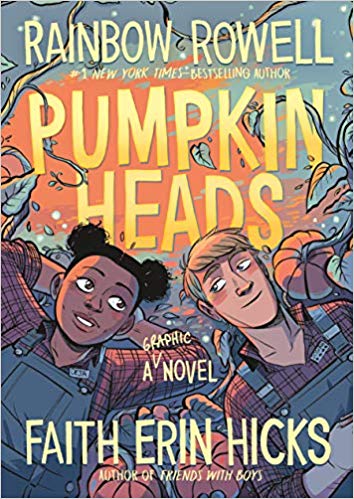 I’m a big Rowell fan because I think she does a fantastic job of capturing the emotional truth of people in her characters. I was new to Hicks, but I quite enjoyed this graphic novel. Hicks’ art was sharp and evocative. It felt like she used an autumn color palette, too, that comes across as seasonal and vivid.
I’m a big Rowell fan because I think she does a fantastic job of capturing the emotional truth of people in her characters. I was new to Hicks, but I quite enjoyed this graphic novel. Hicks’ art was sharp and evocative. It felt like she used an autumn color palette, too, that comes across as seasonal and vivid. Normally I stick with YA here, but I couldn’t resist reviewing what is probably my favorite graphic novel series, even though it’s totally for kids.
Normally I stick with YA here, but I couldn’t resist reviewing what is probably my favorite graphic novel series, even though it’s totally for kids.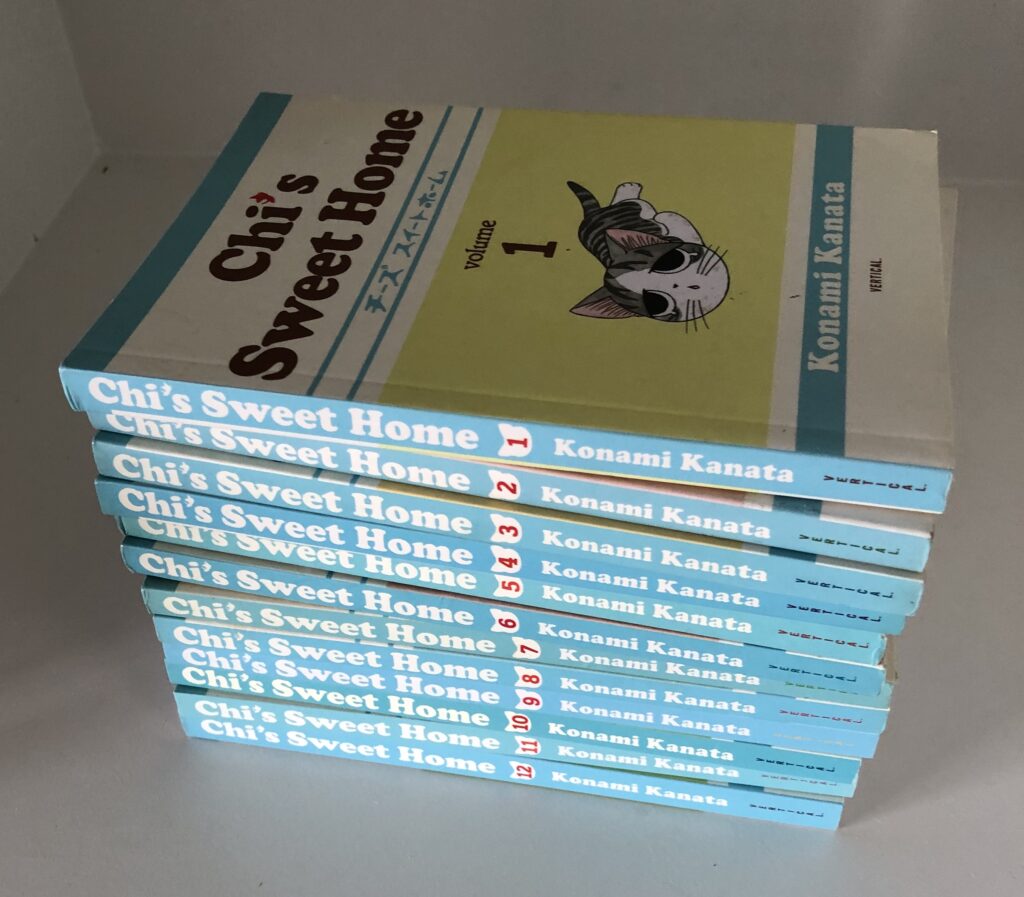

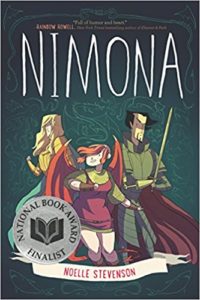 I don’t remember how I found out about this graphic novel, but I’m glad I did, because it was highly entertaining. Although art is generally a matter of personal preference, I liked it. The book features Nimona, a shapeshifter whose base form is that of a teenage girl, and Ballister Blackheart, the kingdom’s purported notorious villain. Blackheart has a vendetta against Ambrosius Goldenloin, who destroyed Blackheart’s right arm. These are the folks you see on the cover. The comic is set in a vaguely medieval world with advanced science. It’s clever and even subversive at times, all while managing to be hilarious.
I don’t remember how I found out about this graphic novel, but I’m glad I did, because it was highly entertaining. Although art is generally a matter of personal preference, I liked it. The book features Nimona, a shapeshifter whose base form is that of a teenage girl, and Ballister Blackheart, the kingdom’s purported notorious villain. Blackheart has a vendetta against Ambrosius Goldenloin, who destroyed Blackheart’s right arm. These are the folks you see on the cover. The comic is set in a vaguely medieval world with advanced science. It’s clever and even subversive at times, all while managing to be hilarious.